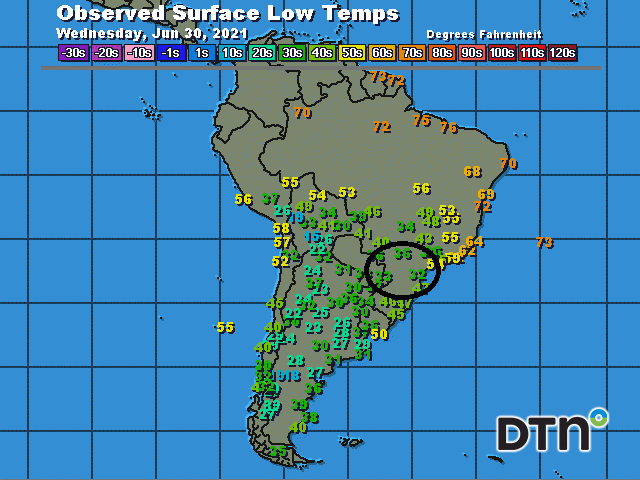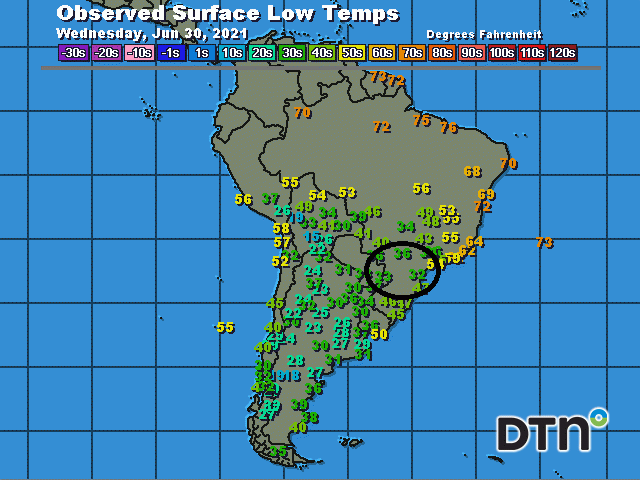South America Calling
Temperature Reversal in South America
If the dryness that has been ongoing over the last several months was not enough, cold temperatures filtered into southern Brazil this week, producing frosts in Parana. Temperatures slid down to almost minus 2 Celsius (29 Fahrenheit) in a couple of places June 29-30, but most places were around plus or minus 1 Celsius (30 to 34 Fahrenheit).
The frosts come at a critical time when corn is still in reproductive to filling stages. According to the government of Parana, as of June 21 there was still 15% of the corn crop in the reproductive stage with the remainder mostly filling. A frost of this magnitude over two straight days could have significant impacts on total production.
P[L1] D[0x0] M[300x250] OOP[F] ADUNIT[] T[]
Safrinha (second-season) corn in Brazil has waded through many challenges this year. It got a late start due to delays in the start of main season soybeans, was further delayed by wet conditions during planting, and then quickly turned dry as the crop was just starting to get established. Every new report that has come out over recent months has continued to show reductions in production forecasts. The frost was just another nail in the coffin of the safrinha corn season.
If there are silver linings for area farmers, it's hard to find them. Corn prices have taken a hit in recent weeks as the moisture situation has improved some in the U.S., and Ukraine and Russia look to have excellent prospects thus far.
The frosts appear to be over, however. Temperatures will be on a slow rising trend for the next seven days, which is also expected in Argentina. The cold was not as biting in this country, which regularly observes frosts over the winter and their main-season crops are just waiting to finish harvest.
Winter wheat, however, could use warmer temperatures. Despite a lack of significant rainfall in recent weeks, soil moisture for Argentina's wheat belt continues to be adequate to abundant, a testament to the prior heavy rains in the fall and the reduced evapotranspiration. Emergence and establishment are likely moving along really well, which includes southern Brazil as well.
The frosts are not that concerning as the wheat is still not tillering and a few hours below freezing will not cause too much damage. But the heat that is coming next week will help the crop accelerate its growth a bit, even if it is the coldest time of the year.
John Baranick can be reached at john.baranick@dtn.com
(c) Copyright 2021 DTN, LLC. All rights reserved.






Comments
To comment, please Log In or Join our Community .